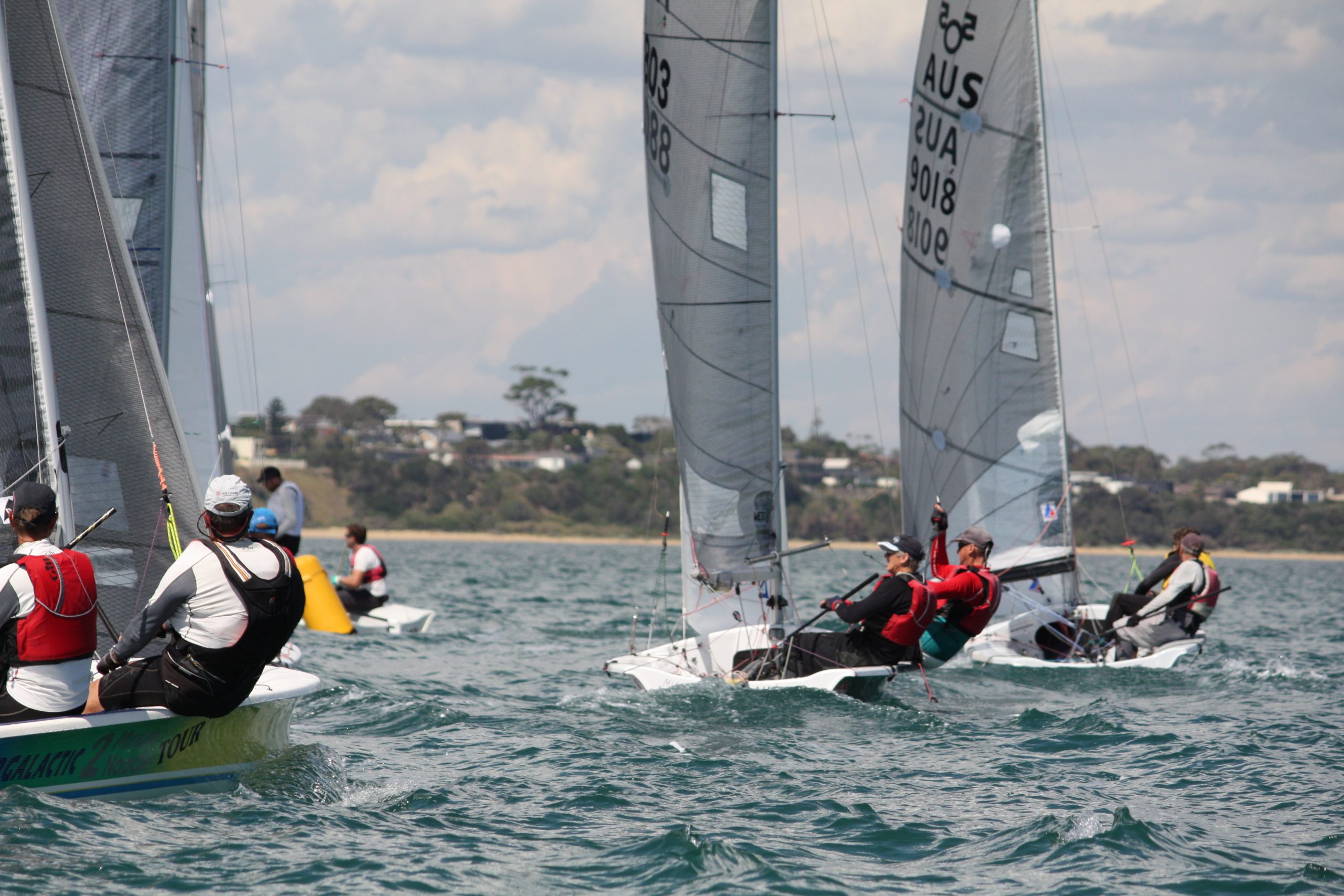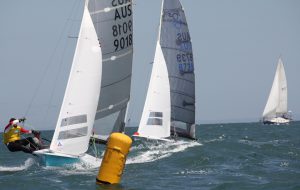

Windward mark layline mistakes, unfortunately, are very common and can be extremely costly. Laylines & Getting Them Right.
One of the most common things that sailors get wrong is getting to the layline too early. If you get to the layline too early, you can no longer play the shifts and you also lose tactical options.
More often than not it is really hard to judge laylines without a good visual reference and wind changes, dirty air, waves, or current are all outside factors that you need to take into account.
Problems that can be created by getting to a layline too early:
- A lift or increase in wind velocity causes you to overstand and sail extra distance.
- Other boats that were below the layline may now be fetching the mark.
- A header favours the boats inside the laylines, since they are closer to the shift.
- In an approaching lull, you have fewer options to sail towards more pressure.
- Boats not on the layline can tack on your air, leaving you with few options.
As you get about two-thirds of the way up each beat, work out your relative distance to the port and starboard laylines and consider your plan accordingly.
Are you a lot closer to one layline than the other? If so, make sure your strategy is sound. You must have a really good reason to keep going toward the closer layline so continue to evaluate all possibilities.
When considering tacking for the mark a simple test is that if you have to look back over your shoulder to see the mark, you’re probably on or past the layline.
It is extremely important to know your boat’s tacking angle which is the difference in headings on each tack.
Different conditions such as wind strength, sail trim, waves and dirty air will affect the tacking angle. In light air and the difference in light to heavy air could be as much as 30 degrees.
Learn Your Boat’s Tacking Angles
Learning your boat’s tacking angles comes from practising in various conditions and it does no harm to record these numbers on the boat for quick reference and to aid your memory in pressure situations.
Drawing tacking lines on the boat are one way of helping to call a tack.
Other boats are a great clue when judging laylines but just make sure that the boats you are referencing are trimmed on and sailing hard, they may have overlaid and are reaching down to the mark or they may have underlaid and are pinching to try to get up to it.
Even if you are very close to the layline there are a few reasons why you may delay your tack or you may even decide to tack early and they are:
- There is a favourable shift coming.
- There is more breeze coming as more breeze lifts you and decreases your tacking angle.
- There are tactical reasons relating to other boats in your immediate vicinity.
- There is an unfavourable shift coming.
- You are heading into a lull.
- There is no clear air on the layline.
- If there is a big wave coming, perhaps delay until it passes. A tack right on it may stop the boat and cause you to underlay on the other tack.
There are things you can do to practice judging laylines, but make sure you practice in varying conditions.
One drill I have found to be particularly useful is to use a fixed mark and tack at it from various distances. The aim is getting to it fully powered up, close-hauled and to pass within half a boat length.
#sailing, #sailingtowin, #competitivesailing, #yachtracing.

